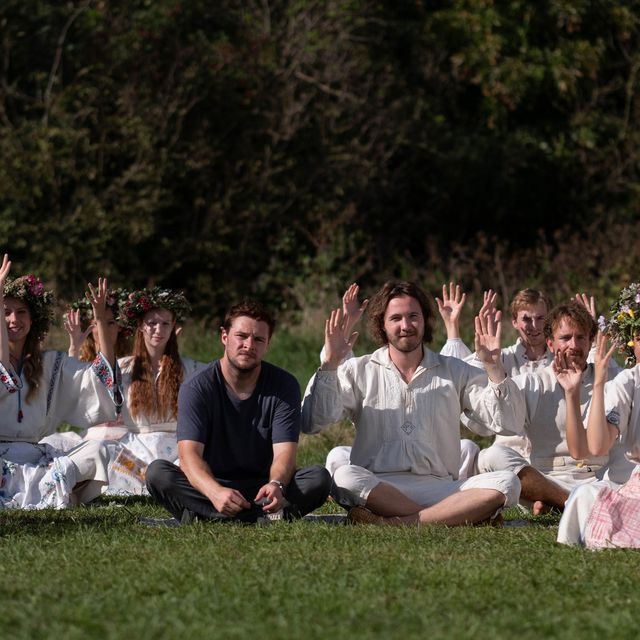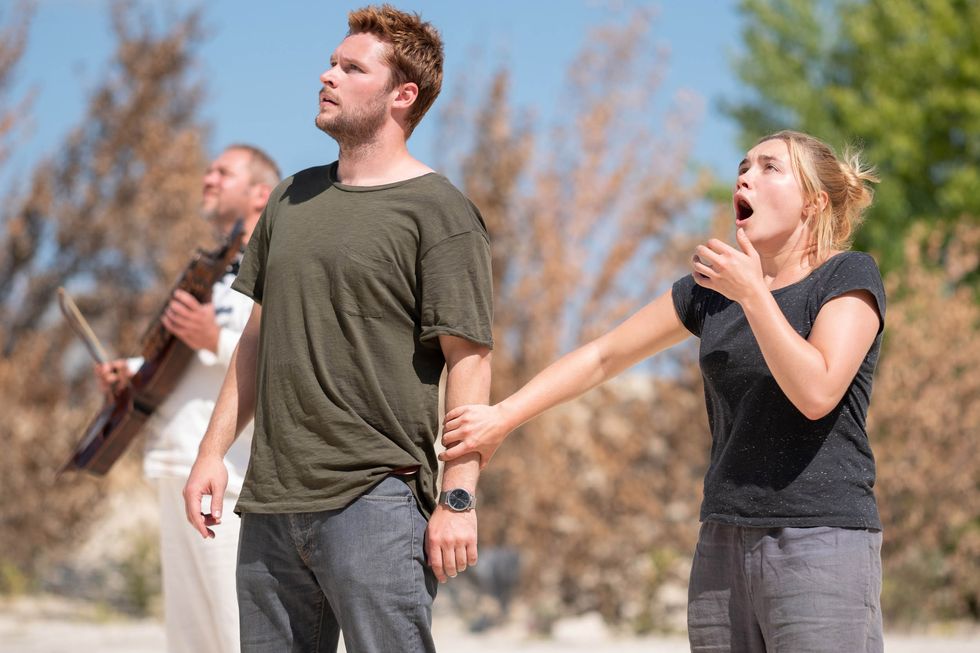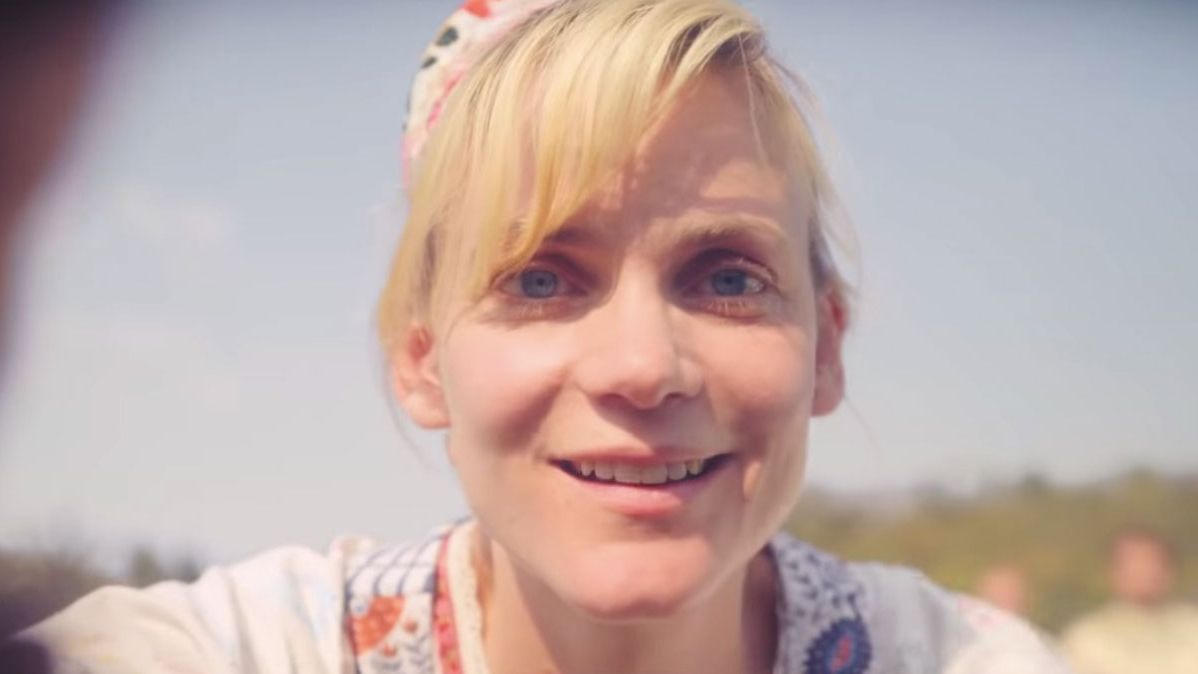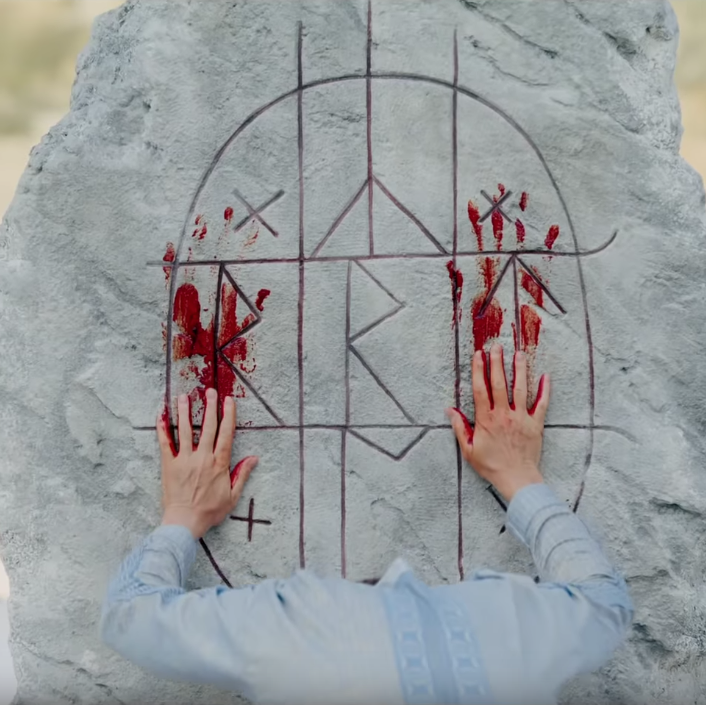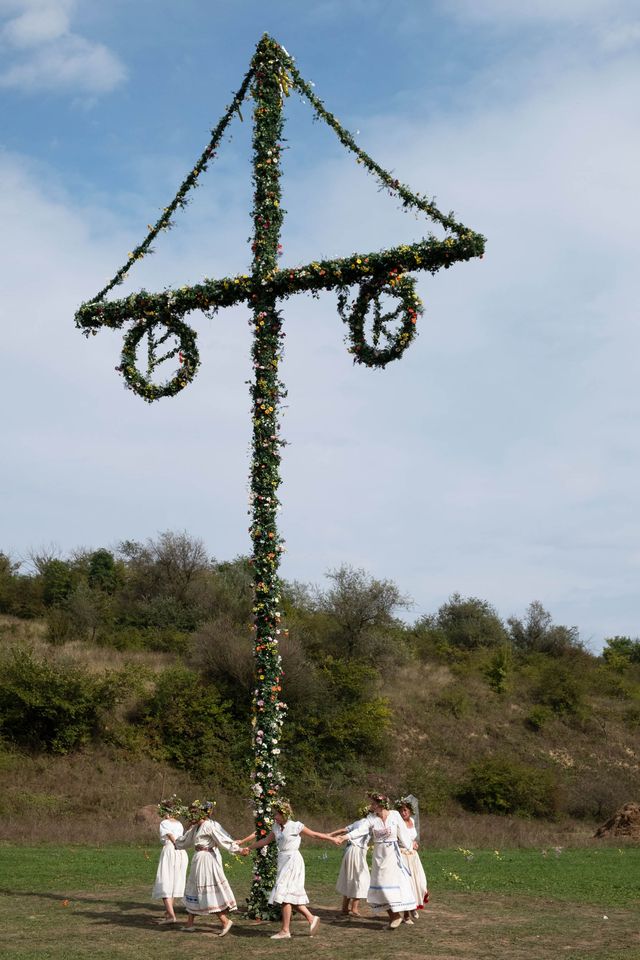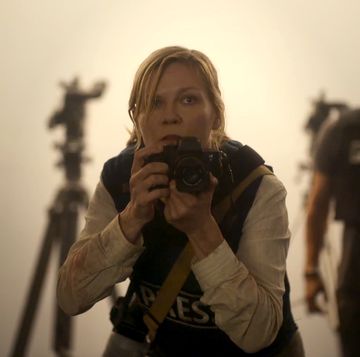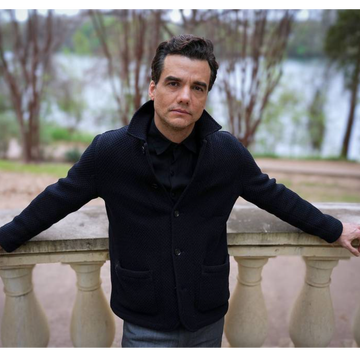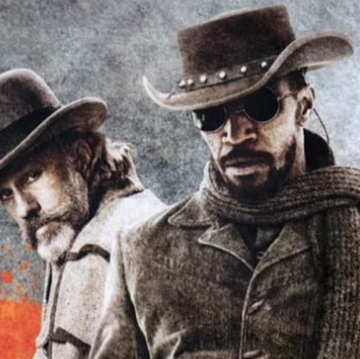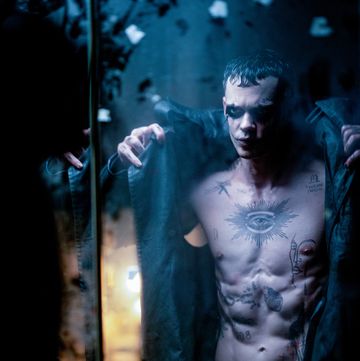What's fascinating about Midsommar, the new horror movie from Ari Aster, is how it slowly settles you into into an isolated Swedish village, and gently elevates the tension of their customs until it's too late. We the viewers are the outsiders along with its main cast—Dani (Florence Pugh), her unsympathetic boyfriend, Christian (Jack Reynor), along with his grad school buddies and their local guide, Pelle (Vilhelm Blomgren)—as they visit a commune in Hälsingland, Sweden to celebrate the nine-day summer solstice festival. They're approaching this trip—mostly—from a respectful anthropological standpoint. The students are interested in observing the ancient traditions, and as these turn more increasingly sinister, they—to varying degrees of success—try to understand and sort through the logic of what's going on. Should they be terrified? In one specific scene, two elderly people take part in ritual suicide, which horrifies the guests, but is a beautiful ceremony to the locals.
And since the film does such a good job of immersing the viewer into this strange, beautiful village, it's tough to sort through what is the fact and what is the fiction of Midsommar. I reached out to Swedish journalist and author Po Tidholm—who has written a book on Swedish traditions—to sort through the real history of this festival.
The Real History of Midsummer
Much of the horror in Midsommar comes from the ancient Pagan history of the festival. But, according to Tidholm, the Midsummer festival in Sweden actually has few Pagan roots.
"Sweden is a thoroughly modern and urbanized country today, but midsummer is one of those holidays where Swedes reconnect with the more agrarian heritage. Many Swedes start their summer vacation around midsummer and leave town to spend time in cottages, summer houses or with country-dwelling relatives," Tidholm told me in an email. "Midsummer is all about celebrating summer, eating herring, drinking aquavit and staying up late. It is a light and happy tradition."
According to a brief history of Swedish Midsummer that Tidholm co-wrote for the Swedish Institute:
In agrarian times, Midsummer celebrations in Sweden were held to welcome summertime and the season of fertility. In some areas people dressed up as ‘green men’, clad in ferns. They also decorated their houses and farm tools with foliage, and raised tall, leafy maypoles to dance around, probably as early as the 1500s. Midsummer was primarily an occasion for young people, but it was also celebrated in the industrial communities of central Sweden, where all mill employees were given a feast of pickled herring, beer and schnapps. It was not until the 1900s, however, that this became the most Swedish of all traditional festivities.
Ever since the 6th century AD, Midsummer bonfires have been lit around Europe. In Sweden, they were mainly found in the southern part of the country. Young people also liked to visit holy springs, where they drank the healing water and amused themselves with games and dancing. These visits were a reminder of how John the Baptist baptized Christ in the River Jordan.
So, while the history of these festivities go back thousands of years, there aren't quite as many sinister ancient traditions as Midsommar would make it seem.
Death and Sacrificial Suicide
One of the most disturbing scenes in Midsommar is when two elderly people commit sacrificial suicide in a public ceremony as part of what this community believes is the circle of life. At this point in the film, none of the outsider guests had fully realized the horror of what was going on around them, and even the locals, and their friend Pelle manage to convince some of them of the beauty of this ceremony.
But, as Tidholm told me "to my knowledge there [have] never been any sacrifices on midsummer. Not even in ancient times."
Although there doesn't seem to be any specific association with ritual sacrifice in Swedish Midsummer, the idea does have history in other ancient European Pagans. As I've found elsewhere, in Germany for example, bonfires were used for human sacrifices during the solstice to Sun Goddess Saule. These traditions seem to be more in line with what we see in Midsommar, which involves a massive sacrificial bonfire in its final scene. It appears, Aster is mostly using Swedish Midsummer as a backdrop to pick and choose various creepy ancient traditions.
Sex and Pubic Hair Love Potions
The big climax of the film (no pun intended) involves ritual group sex that was set in motion by a pubic hair love potion. Early in the film, a local young woman casts her eye on Christian, and while eating dinner one evening he finds pubic hair baked into his pie as some sort of love spell. While this isn't any sort of real tradition associated with Sweden's Midsummer festival, I have found evidence of the pubic hair pie being an actual spell from Medieval times.
The film ends with Christian having sex with this young women in front of a group of naked, chanting women. This is justified in Midsommar as a way to bring outside genes and avoid too much incest in the community. This, again, isn't an ancient tradition associated with Swedish Midsummer, but, as Tidholm tells me, sex is unofficially a part of the festivities.
"Since people get drunk on midsummer, the also tend to have sex with people they shouldn't have sex with," Tidholm says. "That, and the romantic feel of a beautiful and long night when the sun almost doesn't set, used to make March 22nd, nine months after midsummer, the day when the most babies where born in Sweden. Thats not true anymore though since most Swedes are pragmatic enough to plan their pregnancies in order to give birth when it suits their work schedule."
Ancient Runes
Midsommar relies heavily on ancient symbolism—particularly in runes that are seen on walls, in formations of dining tables, on blankets, on clothes, and on graves. These play an important role in the film, but, as Tidholm says, to his knowledge there have never been any runes associated with Sweden's Midsummer festivities.
However, I did find some evidence of similar Norse runes in Sweden. While these don't have anything to do with Midsummer in particular, these runes do look quite similar to the ones seen in the film. In fact, as recently as this May, the Swedish government was looking to ban these ancient Norse runes as they'd been "misappropriated by neo-Nazi groups," according to a report.
Maypole Dancing!
In the film, Dani takes part in the traditional Maypole dancing. This scene is long, and strange, and uncomfortable, and beautiful. She's on drugs (more on that later) which paints the tradition in a bizarre light, but sinister undertones aside, this one is actually a real thing.
"The Swedish 'midsommarstång' or 'maypole' is said to be of German, Christian heritage," Tidholm tells me. "The day used to honor John the Baptist, but today it is a totally secular holiday where we celebrate the arrival of summer. This has somewhat older roots from the pre-industrialised Sweden. Villages got together, danced around the maypole—mostly romantic or very silly songs—and ate herring—which we tend to do on every festive occasion."
Drugs During Midsummer
In Midsommar, the locals pretty consistently use psychedelic drugs as part of their ceremonies and to lower the defenses of the outsiders. As Tidholm explains, the festivities have traditionally been more about drinking a lot than taking drugs. "As far as drugs go, Swedes have had—like most nordic people—a tendency to drink a bit too much on festive occasions. But thats it," he says. "Boring, I know."
